
Travel
Tiger of Mysore
City of Kings
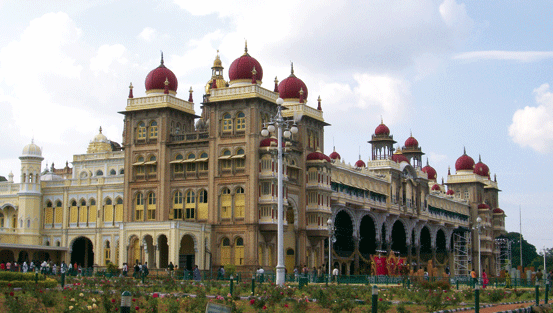
Mysore is an eye-opener to the cultural heritage, history and scenery of India.
By: Rufaida Javid
‘Salubrious’ is a word often used to describe the climate in Bangalore, one of India’s richest and most exciting cities. But alas, as a native of Bangalore, I can attest to the growing pollution in the city. So whenever Bangaloreans want a bit of their old city back, they head to neighboring Mysore. This is helped by the fact that the excellent new motorway connecting the two cities has made driving a pleasure and reduced travel time from an average of four hours to just over two.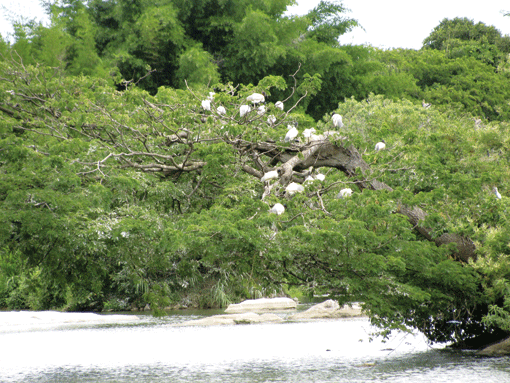
And the scenic 150-km journey is full of possibilities. Our first stop was at the Kamat Upahar, a restaurant on the highway that has become a tourist spot in its own right. Many just drive all the way here to sample the idlys. Though I generally have an allergy to vegetarian food, I must confess that of all the idlys I have had in my life, this restaurant offered the best. Its chef steams the batter inside a banana leaf that is served while inside it having taken a cylindrical form, instead of the usual flat circle. We had it with the usual sambar, a thin, spicy curry, and washed it down with cool mausambi (a fruit not very different from an orange) juice.
Along the way, just outside the Bangalore city limits, lies the Innovative Film City, a $100 million project catering for the needs of India’s colossal movie-making industry. But besides the facilities for shooting films, there are other attractions for visitors. Chief among these is the Louis Taussad Museum. Having seen the real Madame Tussuad Museum on a recent visit to Hong Kong, I was disappointed by the low quality of the wax models on display. But others around me seemed genuinely impressed. The museum houses Mahatma Gandhi, Bill Clinton and Adolf Hitler among many others. But the pride of place is reserved for a local Kannada movie superstar, the now-deceased Raj Kumar, who was famously kidnapped by the infamous forest brigand and cop-killer Veerappan in 1999 (Veerappan was himself shot dead in the jungles around Mysore in October 2004 but that is another story).
The film city is also home to a dino-park, set in the midst of dense vegetation, complete with artificial mist to give the impression of a tropical jungle. And if your idea of fun is splashing around, then you can head to the artificial beach and the wave pool.
Continuing our drive towards Mysore, we stopped next at the world-famous Ranganathittu Bird Sanctuary. The best thing about this wonderful sanctuary is that it is not too big, as sanctuaries go, and hence easy to navigate. There are ranger-guided boats tours available, and apart from the wonderful collection of exotic birds like the painted stork and Ibis, you will also see crocodiles and otters. The boat ride is not to be missed!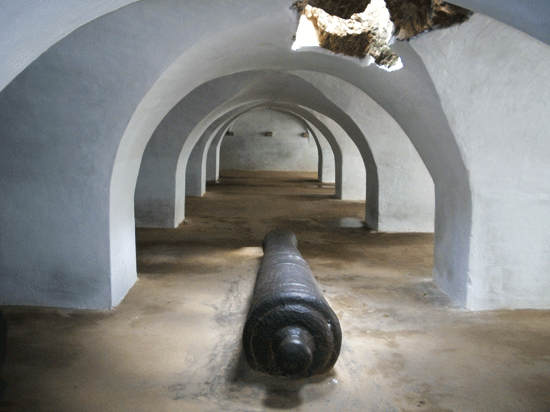
Having spent a good two hours bird watching, we headed to Srirangapatnam, the seat of power of Mysore’s most famous son—Tipu Sultan. Srirangapatnam is just 3 km from Ranganathittu. From the historical perspective, no place in Mysore is of more significance than this island suburb. The main attraction here is the Tipu’s Summer Palace—the Darya Daulat Bagh (Garden of the Wealth of the River). At first glance, this palace is not much to look at, especially compared to the other great palaces and mausoleums that one comes across in India. On the other hand, the simplicity of the palace is a tribute to the austerity of that mighty king.
Darya Daulat is surrounded by beautiful gardens and open spaces, which are a big draw for visitors with children. It is unique in that it is constructed of teak wood, very similar to Tipu’s other palace at Bangalore. The ceilings are covered with paintings—scenes from Tipu’s ferocious battles with the British, and scenes from the day-to-day business of the Royal Court. In the middle of the palace are interesting exhibits from Tipu’s time, especially the sketches of himself and his family members made by contemporary British and French artists. Another section of the museum houses Tipu’s weapons, and is the major draw. It is easy to notice that the weapons would have been state-of-the-art during the Sultan’s time. 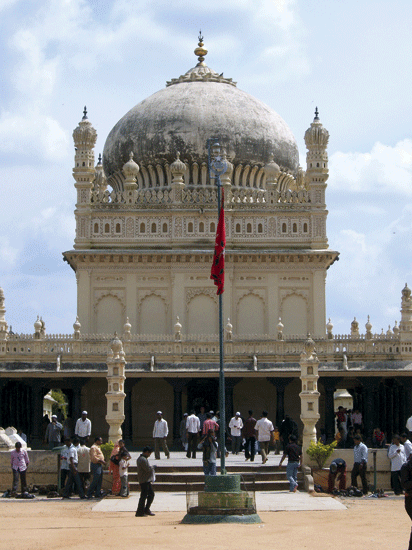
Known as the ‘Tiger of Mysore’ for having killed an attacking tiger with his bare hands while on a hunting trip, Tipu was a military genius, and his army was one of the best trained in the sub-continent. He is also believed to be the first to have used rockets in a war. Former Indian President Dr APJ Abdul Kalam, India’s “Rocket Man”, in his Tipu Sultan Shaheed Memorial Lecture in Bangalore years ago, called Tipu the innovator of the world’s first war rocket. Two of these rockets, captured by the British at Srirangapatnam, are displayed at the Royal Artillery Museum in London.
A few kilometers from Darya Daulat, you can visit Tipu’s mausoleum, where he is buried alongside his illustrious father, the warrior-king Hyder Ali. Outside the mausoleum, there is Tipu’s mosque and the famous tiger-striped flag of Tipu’s Mysore. Tipu died on the battlefield on 4 May, 1799, in the Fourth Mysore War with the British. The Archaeological Survey of India has erected a plaque at the exact place where his bullet-ridden body was found, not far from the Darya Daulat.
Just 15 km from Srirangapatnam, you enter Mysore city and immediately you will feel you are in a miniature version of Bangalore—the development, traffic, apartment blocks and bright lights. The proud people of Mysore go about their business peacefully and the biggest attraction inside the city, of course, is the magnificent Mysore Palace. Built in the Indo-Saracenic style, the palace is the official residence of the Wodeyar family, the erstwhile rulers of Mysore. You can take a long walk inside the palace, and see the Maharajah’s private collection of fine art. 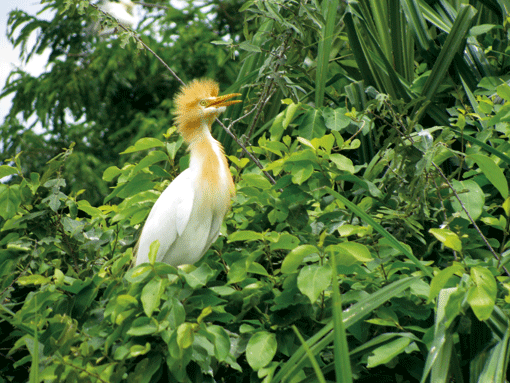
We wound up our trip to Mysore with a visit to the beautiful Karanji lake, which is a favorite haunt for migratory birds like the egret. Within the lake area you can also see the aviary and visit the interesting Regional Museum of Natural History.
Getting There
The nearest international airport is in Bangalore, 150 km away. The best way to see Mysore is by taking a conducted tour of the city. There are numerous private companies, but your best option is the Karnataka State Tourism Development Corporation, which organizes daily sight-seeing tours to Mysore (from Bangalore) for Rs 675 (about SR 54), covering all major attractions.
Costs
India in general and small cities like Mysore in particular, is value-for-money destinations. Your riyals and dollars will take you a long way here!
Visas
Most foreigners need a visa to visit India. This can be obtained from the Indian Embassy in Riyadh, or the Consulate in Jeddah.